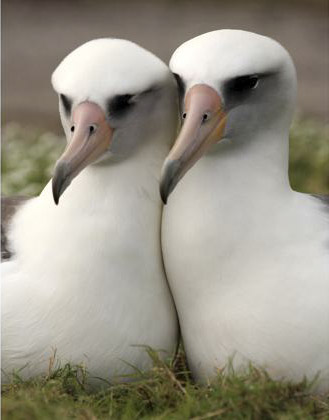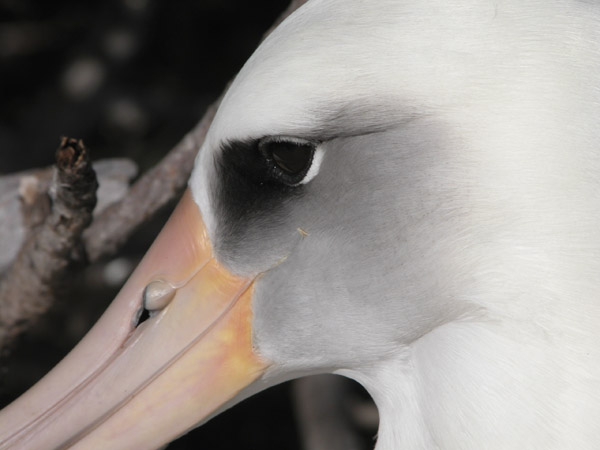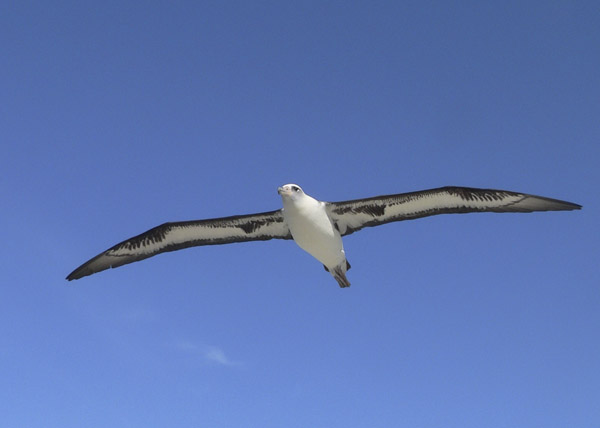Published in the Ocean Watch column, Honolulu Star-Advertiser © Susan Scott
January 26, 2015
I was recently asked whether Laysan albatrosses were really nesting at Kaena Point. They sure are. The albatrosses there are one of Hawaii’s best conservation success stories.
Laysan albatrosses are peacefully sitting on eggs at Kaena Point because of years of hard work by countless people, aided by the birds’ strong drive to raise chicks. In that, these big birds (wingspan 6.5 feet) are unwavering — a good thing since we nearly wiped them out.
The albatross decline in the main Hawaiian Islands began with the arrival of Polynesian settlers about 1,000 years ago, and the drop continued with the influx of European colonists.
 A Laysan albatross pair.
A Laysan albatross pair.
Courtesy Mark Grantham
In the early 20th century, the birds suffered devastating losses due to feather and egg collecting, introduced predators, military operations and fisheries bycatch. The number of albatrosses nesting on Oahu dropped to zero.
But even being shot at, having eggs crushed by trucks and eaten by cats, dogs and mongooses, some birds kept coming to Oahu, guided by their instinct to raise offspring near the spot where they were raised. In 1947 one chick was found on Moku Manu Island off Mokapu Peninsula. By 1978 adult albatrosses were appearing at several Oahu locales, with Kaena a favorite.
After moving to Hawaii in 1983, I hiked to the point to see my first-ever albatross. To my horror I found men in trucks shooting the birds. That ended in 1991 when the state made the area a nature preserve and banned off-road vehicles. The first Kaena albatross chick fledged in 1992.

To further help the seabirds (shearwaters nest there, too), workers in 1995 began trapping cats, rats and mongooses. In 2011 a predator-proof fence was built around the point.
Researchers Lindsay Young and Eric Vanderwerf report this is a record year for Laysan albatrosses inside the fence: 94 couples are nesting, accompanied by uncounted adolescents there to sing, dance and find a mate.
The birds that come to Kaena are not just offspring of the local population. Many are explorers displaced from other islands and searching for a new place to breed. Because albatross pioneers are mostly females, Kaena Point hosts more females than males. Young and Vanderwerf determined that about one-third of the nesters there are female-female pairs successfully raising chicks.
I go often to Kaena Point in winter, and each time I come home with a song in my heart and a spring in my step. The preserve is a one-hour drive from town and a 5-mile round-trip hike.
